FAQ
- Bolivia climbing questions
-
Mallorca island and rockclimbing
- What are main specifics of rockclimbing trip to Mallorca
- Mallorca island impressions
- Rockclimbing safety Spain
- Mallorca climbing accommodation
- What season is possible for rockclimbing in Mallorca
- Transport accessibility of climbing sectors in Mallorca
- Active vacation in Mallorca
- Saint Anthony night in Mallorca
- Peru climbing questions
- Gear reviews
-
Safety in the mountains
- How NOT to climb the summit?
- Mountain navigation
- At the limit of possibilities
- Mountain thunderstorm
- Solo ascents and mountain trips alone
- Mutual responsibility in mountaineering
- Safety illusions in the mountains - a rope
- Independent team of two
- Mountain troubles
- Psychological problems in the mountains
- Health in the mountains
-
Elbrus questions
- Elbrus climbing gear
- Climbing Elbrus with children?
- Mount Elbrus location?
- Elbrus logistics
- How to get to Mount Elbrus?
- Elbrus German airfield?
- Elbrus difficulty grade
- 5 points beginner must know about Elbrus
- How to prepare for Elbrus?
- Are there avalanches on Mount Elbrus?
- Climbing Elbrus solo?
- Seasonality of climbing Mount Elbrus
- How much time climbing Elbrus takes?
- Clothes for Mount Elbrus?
- Pressure at the top of Elbrus?
- Elbrus air temperature
- Elbrus sightseeing
- How much to climb Elbrus
- Gear questions
- Mountaineering questions
- Mountain climbing training
-
Rockclimbing questions
- Rockclimbing gear
- How to choose your first rockclimbing shoes
- The hand power in roclcimbing
- What is Rockclimbing tours
- Non olymnic rockclimbing
- What is rockclimbing?
- Where do you climb?
- Where and when we organize our rockclimbing programs?
- What is rockclimbing?
- Rockcliming program class?
- Climbing motivation
- Horse riding tours
- Iceclimbing questions
-
Questions on the alpine programs
- What to climb in Morocco?
- Weekend summit climb
- Georgia 2023
- Pico Aneto - what is that mountain?
- Mountain programs format
- Mountain climbing food ration
- Queries on the alpine program climbing Mount Bazarduzu
- Queries on the Kamchatka alpine program climbing
- What is combined program?
- What is sightseeing program?
- What is pilot program?
- What programs you have of the medium complexity level?
- Basic expedition rations
- Prices for the mountain climbing programs
- Queries on the Mountain Course in Adyl Su valley
- Program complexity?
- Questions about MCS AlexClimb
- Questions related to trekking programs
Climbing knots
Read in Telegram in English
Leer en Telegram en Español
MCS AlexClimb climbing Club and Mountaineering School
There is a point of view among beginners that for mountaineering it is vital to be able to tie a huge number of special mountaineering knots.
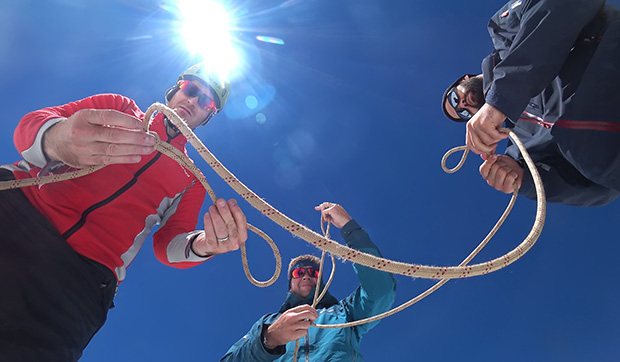
Not every mountaineering route requires a confident skill in tying mountaineering knots
People who come to my climbing School with this conviction have extremely vague ideas about mountains and mountaineering techniques. For some of them, it even turns out to be a disappointment that at the initial stage of preparation for the mountains we are considering completely different issues, limiting ourselves to minimal knowledge of mountaineering knots.
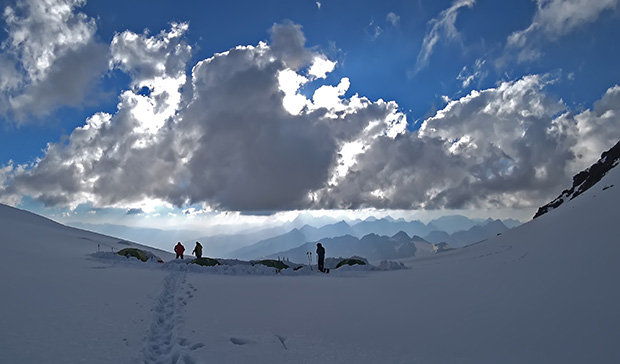
Tactics and physical training in mountaineering are usually more important than the nuances of using equipment
In this text, I want to dispel some misconceptions and talk about the minimum skills in climbing knots that may be needed on routes of initial difficulty - where the use of a rope is dictated more by general stereotypes about mountaineering than by practical necessity.

Climbing Mount Gestola, Central Caucasus
The fact that using a rope is not always a panacea for all troubles and misfortunes is described in detail in my article "The illusion of safety - a rope".
If you are planning your first ascent of Mount Elbrus (Kilimanjaro, Aconcagua), I would advise you to postpone learning climbing knots and focus on your physical and tactical training - these skills will certainly be more useful to you on a basic mountaineering route than the ability to tie a bowline with your eyes closed.
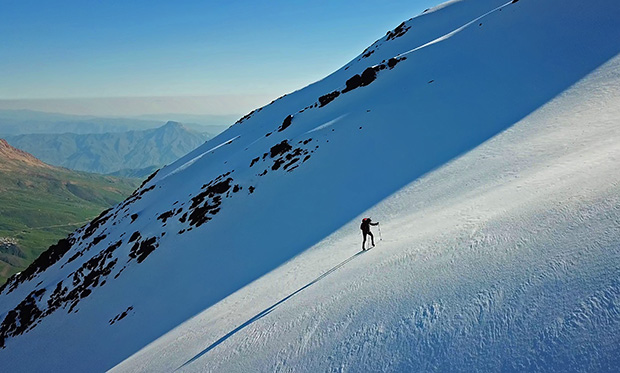
Climbing Mount Bazarduzu in Dagestan - the alpine route of initial difficulty
But if you have something more interesting in your plans (including a desperate plan to fix the chimney at your country house), then having the skill of tying 3-4 basic knots in reserve may be very useful.
So, what are mountaineering knots?
This is a group of special knots that have passed into mountaineering from seamanship, where they have been used practically unchanged since the advent of the sailing fleet.
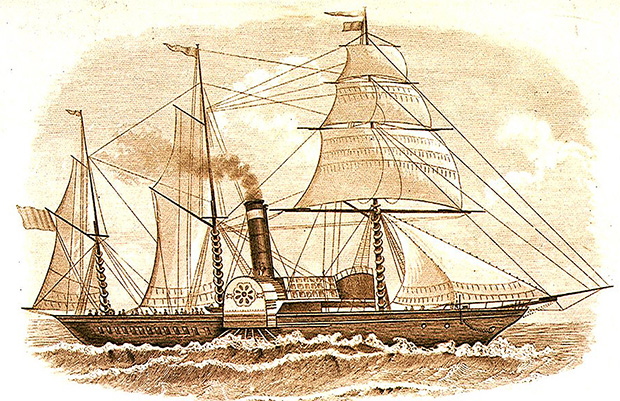
The knots that we call mountaineering knots appeared in seamanship long before the advent of mountaineering
The main criterion that allows these knots to be used for their intended purpose - both in sailing technique and in mountaineering - is their main property - the load inside the knot is distributed evenly and safely for the rope structure.
The probability of a rope breaking at a knot, when using the correct method of fixation, is minimal. All mountaineering knots do not overload the rope when used normally and are easily untied after the load if off.
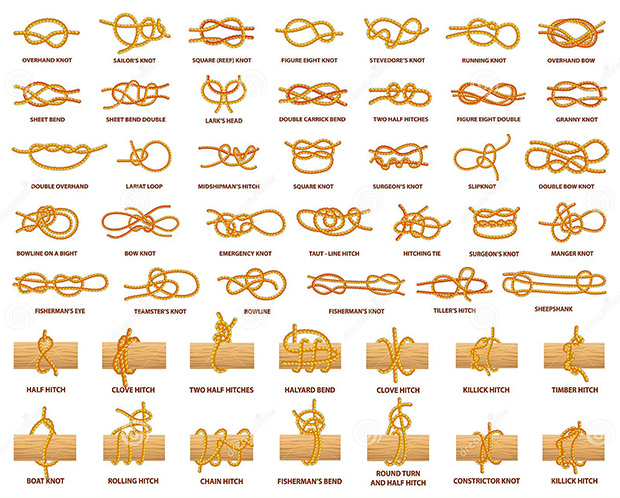
Basic sea knots used in the sailing fleet
There are more than 30 most important knots in the sea navigation that every sailor on a sailing vessel should know.
-------------------------
In mountaineering or rock climbing, I will highlight just 8 important knots that you may need on the alpine routes.
1. "Figure eight" knot - the most common and easy to tie mountaineering knot. It is used for fastening to the end or intermediate section of the rope if it is not used along the entire length. Limitation - the load on the knot can only be applied along the axis of the rope.

Figure eight knot
2. Single / double bowline - a classic of seamanship, the most practical and quick knot for fixing the end of the rope. Like the "figure eight" knot, the bowline works only along the axis of the rope. The main advantage of the bowline is that it does not tighten at all under load. This advantage dictates certain rules when using a bowline - you should always tie a fixing control knot, and when climbing lead, you should attach yourself to the rope with a more secure double bowline
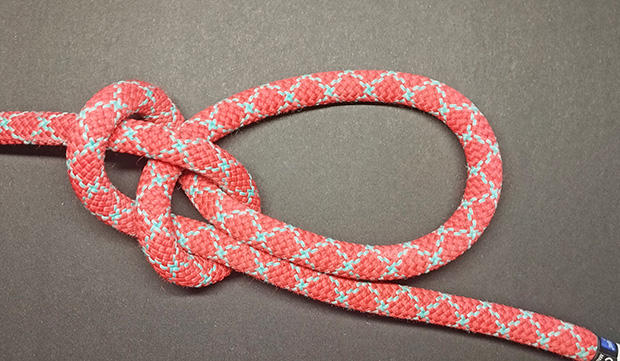
Bowline knot
3. Butterfly loop - unlike the first two knots, this knot allows a load at an angle to the rope axis and can be used to attach more than 2 people to the rope when climbing roped.
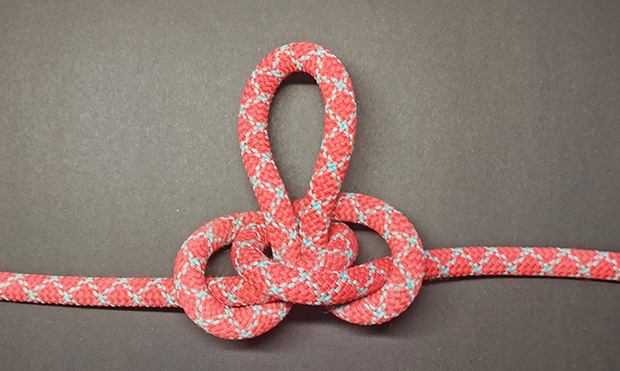
Butterfly loop knot
4. Prusik - a grasping knot - an extremely useful knot that can be used for belay when rappelling or ascending the rope. Prusik knot can even replace a jumar if you need to climb a rope.
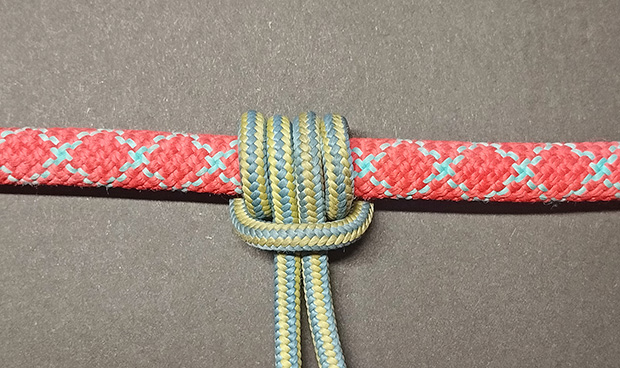
Prusik knot
5. Double fisherman's knot - reliably connects two ends of a rope of the same diameter
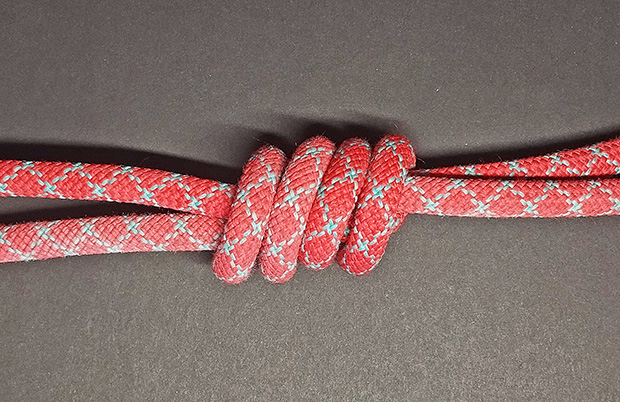
Double fisherman's knot
6. Clove hitch knot - commonly used to quickly secure an intermediate segment of a rope safety system, for example, to divide a fixed rope into sections. The Clove hitch knot is used only as an auxiliary intermediate knot; this knot is not suitable for securing the ends of a rope. In the original, the knot is used to secure the steps of a rope ladder

Clove hitch knot
7. Munter hitch knot is used as an alternative method of lowering or belaying if a carabiner is available. This method should not be overused - the Munter hitch knot provides braking of the rope due to its friction against itself and, therefore, wears out the rope very quickly.

Munter hitch knot
8. Sheet bend knot - the least frequently used in mountaineering practice, a typical seamanship knot. In the original, it is used for quick adjustment of sheets - equipment at the ends of sails for their positioning relative to the wind.
In mountaineering, the sheet bend knot is used to connect the ends of a rope of different diameters - for example, the main and auxiliary ropes when pulling through a station or to adjust the position of a hanging belay system. The scope of application of the sheet bend knot in mountaineering is a narrow professional rescue specificity or industrial mountaineering.

Sheet bend knot
Author of text and photographs - Alex Trubachev
Your mountaineering, ice climbing and rock climbing guide
MCS EDIT 2024
Our Principles
AlexClimb Rule #1 - Safety First
From the very beginning of our activity, here nearly 16 years, the first Principle of work of School of mountaineering and rock-climbing of MCS AlexClimb is the Safety Priority. On the basis of this Principle all process of training is based, all programs and rounds are developed and carried out only within this main principle. We consider that at professional approach to development of programs, at personal discipline and correctly put motivation - occupations by mountaineering and rock-climbing are COMPLETELY safe. And from the return - all troubles and accidents in our sport come from nonprofessionalism, from ignorance or neglect by elementary standards of safety, from irrational motivation, from revaluation of own forces and opportunities. All these prerequisites we COMPLETELY EXCLUDE in our work - ours Rock-climbing, Ice climbing and Mountaineering are based on one Principle - the Safety Priority. In rock-climbing, mountaineering and ice climbing, the Priority of Safety of MCS AlexClimb-is your personal security and comfort irrespective of, than we are engaged - we train muscles and we work technology of the movement in the sports hall and on the rock climbing wall, we make the way through snowstorm to top or we relax on golden sand of the Caribbean beach after hot day of trainings on rocks. The Safety priority - the main credo of School of mountaineering and rock-climbing of MCS AlexClimb.
AlexClimb Rule #2 - Leave No Trace
Closely interacting with Nature, working with the active programs in mountains, woods, lakes and rivers, we perfectly understand the importance of carefull and respectfull bahavior towards the Nature, for its resources. From the very beginning of our outdoor-activity we adopted rules of Leave No Trace technique - the standard of behavior of the person accepted in all the civilized world in relation to environment and especially - to the wild nature. After all on the relation of people to the nature near which they exist, itself can draw dalekoidushchy conclusions on the relation of these people to... Where and as we didn't travel - we don't reserve any garbage, we try to reduce whenever possible our influence on environment to a minimum. We clear earlier zagryazyonny tourist parking of the left garbage, we take out and we take out to utilization places that to us other people left there. We consider that only thus, at personal individual consciousness of each citizen, each tourist, climber or autotraveller, we will be able to keep the nature surrounding us in its state, natural, suitable for life, - in it pledge of the healthy future for ourselves and our children.





